Every day, my inner self sends me a message, “You should exercise. It is not only good for your health but you should maintain a good fitness level in order to tackle all those crazy places you want to visit.” The day I visited Cacaxtla, I wished I have only listened to the wise part of my brain.
Cacaxtla is an archeological site located near the southern border of the state of Tlaxcala. What makes this site unique? It contains the oldest mural painting featuring human figures and symbols from other cultures. The site had its apogee from 600 to 900 of our era. Therefore, it gives us the opportunity to take a look at very old murals which remain in a superb state of conservation.
This is the main reason I decided to stay at least a day in Tlaxcala (the capital city). Even though this is the most famous sight in the state and even though it is only 12 miles from the capital, I felt like we had to cross an ocean to get to it.
The journey started by taking a taxi from the center to the bus station. After passing 5 restaurants selling “pollos al carbon” (charcoaled chicken), we arrived at the small terminal when the sun was highest in the sky. I asked where to take the bus to Cacaxtla. A security guard instructed me, “Walk to the left end of the terminal.”
People were entering a combi (small bus). I asked the ticket vendor if he was going to Cacaxtla.
“I don’t stop there but I can leave you very close.”
“How close?” I replied.
“It is going to be a 10-minute walk but with the sun … you know.”
I got the hint. We were asking the sun to punish our skin. Proof that you don’t need to go to the beach to get suntanned. We looked at each other and got into the combi after paying 7 pesos per head.
The ride seemed eternal due to the stops to pick students, moms with kids and guys with bags full of peanuts. After leaving the urban area, everything started to feel less crowded. Thru the window, I was able to observe the tiled cupolas of churches, the colorful paper ornaments hanging from the houses and the signs announcing balnearios (pools). Popo and Itza started to dominate the view when we got closer to our destination.
The combi stopped and the ticket guy said, “Get down in here and walk straight thru that alley.”
In the middle of the street, surrounded by candy vendors and stray dogs, there was only one direction to look: UP. Ahh, I loved when people give you kind of misleading descriptions. A 10-minute walk under the sun. The most important fact was not disclosed. A 10 minute UPHILL walk. These are the moments when I want to beat myself for not exercising on a regular basis.
After huffing and puffing, more than an asthmatic, under the relentless sun, I made it to the entrance. Nobody said the quest for not well-known civilizations was going to be easy.
I paused to take a look at the smoke coming out of Popo (volcano) and felt relieved once I saw the main site.
Table of Contents
Cacaxtla – History and Location
Cacaxtla was the capital of the Olmeca-Xicalanca people (not to be confused with the Olmecs who flourished 800 years earlier). Not a lot is known about these people. Some believe they migrated from the Gulf Coast region and others affirm they were Mayas (or descendants of the Mayas).
As previously mentioned, this archeological site is located in the state of Tlaxcala (one of Mexico’s lesser known states). Cacaxtla is located 10 miles (about 20 kilometers) from the state capital (called Tlaxcala too).
Tlaxcala is only 25 miles (about 50 kilometers) from Puebla. As a matter of fact, Cacaxtla became the top power in the area once Cholula (another powerful state located a stone thrown away from Puebla) fell.
Site Details
The Gran Basamento – a 200 meter long (656 feet), 25 meter high (82 feet) platform where the city’s main religious and civil buildings were located. The basamento, its structures, and murals are protected by a metal roof which the National Institute of Anthropology and History (INAH) claims is the second largest of its kind (only the one covering the Terracotta Warriors in Xian, China is larger).
Access to the top of the platform is through a series of wooden stairs. Once at the top, the site is toured by walking over wooden platforms. Signs explain (in Spanish and English) the main points.
Points of Interest
Mural de la Batalla (Battle Mural)
This is the main painting in Cacaxtla. It has been interpreted as a fight between local and rival groups. It may also represent a ritual where the winners show their arms and sacrifice the losers. A closer look reveals the clothing/accessory details, amulets, and facial expressions. Some representations are very gruesome in my opinion.
Priest Attire
Another mural portrays the birdman and the feline man, possibly rulers/priests of the city. The birdman is associated with Quetzalcoatl (the feathered snake), the deity who taught humans important skills such as arts and agriculture. The feline man (maybe a jaguar) is associated with the rains, an element responsible for bringing life to earth.
Templo de Venus (Venus Temple)
On the columns of this precinct, two figures are represented. One is male (with a scorpion tail) and the other is female. Both of them wear skirts with the symbol of Venus (reminiscent of an eye). The murals may have been triggered by an astronomical event involving the planet.
El Templo Rojo (The Red Temple)
This mural contains aquatic animals, maize, cacao, a priest and a cacaxtli (a basket used to carry merchandise). Experts believe the painting provides an interpretation of the name of the site.
Other Sights
The archaeological site of Xochitecatl is located half a mile (1 km) west. A structure known as the Pyramid of Flowers is visible from Cacaxtla. Even though the sites are located close to each other, I have heard there is a fence separating them. You may need to ask how to walk from one site to the other.
There is a museum located close to the entrance of the site. The museum has extensive information about the Olmeca-Xicalana civilization and interpretations of what is found on Cacaxtla. The museum provides visitors with restrooms, a store, an auditorium, a restaurant and tour guide services.
How to Get to Cacaxtla
To my knowledge, there is not a direct bus that goes from Tlaxcala to Cacaxtla (bus station to site entrance).
From Tlaxcala’s main bus station, take a colectivo (small bus) to the town of San Miguel de los Milagros. From there you can walk (uphill) to the site’s entrance.
For specifics, you will need to ask at the bus station. If your Spanish is rusty, ask at your hotel. Cultural organizations plan tours to the site during the weekend.
Another possibility is to book an excursion from Puebla (about 30 miles away). Since this is a bigger city, tourist services are widely available. A tour may include a stop at the city of Tlaxcala too.
Hours and Costs
The site is open every day from 9:00 a.m. to 5:300 p.m. Double check operation hours during holidays.
Entrance fee is about 60 pesos or about 3 dollars.
Recommendations for Visiting
Like when visiting any archeological site, go prepared with comfortable shoes, hat, sunglasses, sunscreen, and water. There are small stores near the entrance of the site where you can buy drinks and snacks.
Even though the road to Cacaxtla seemed eternal, the reward was higher than what I expected. I was able to survey the Tlaxcala-Puebla valley from the same point the Olmeca-Xicalana did.
What do you think about Cacaxtla? Let me know in the comments section below.
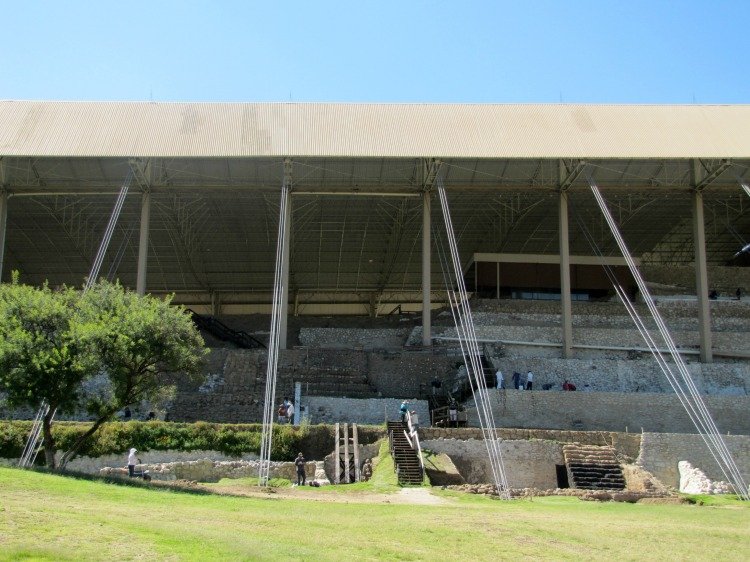






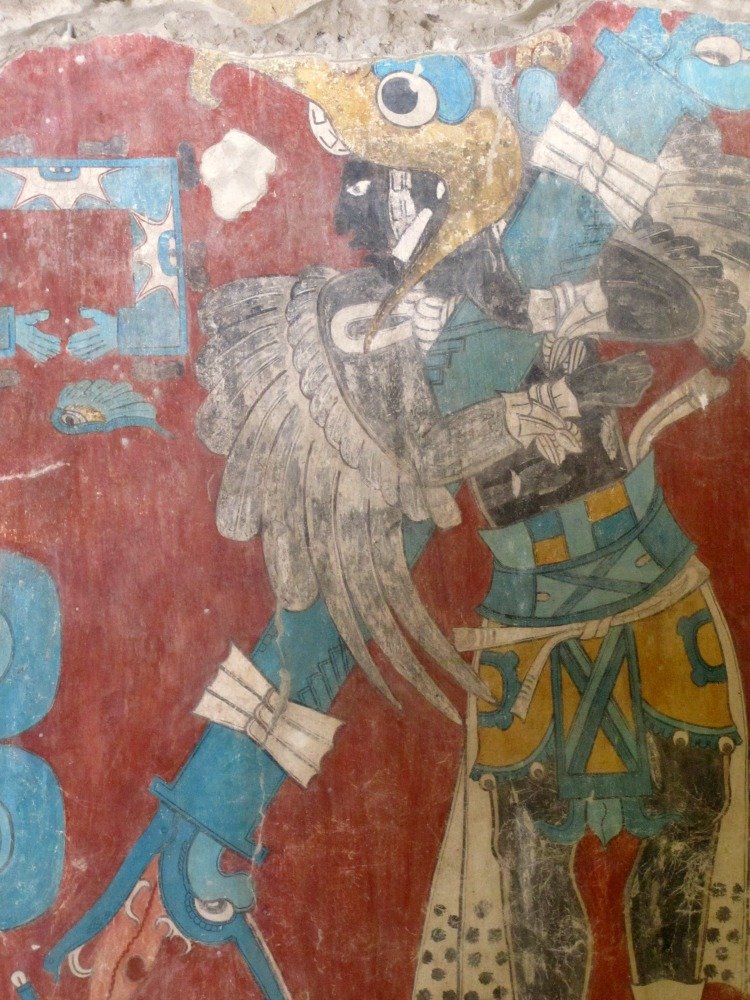


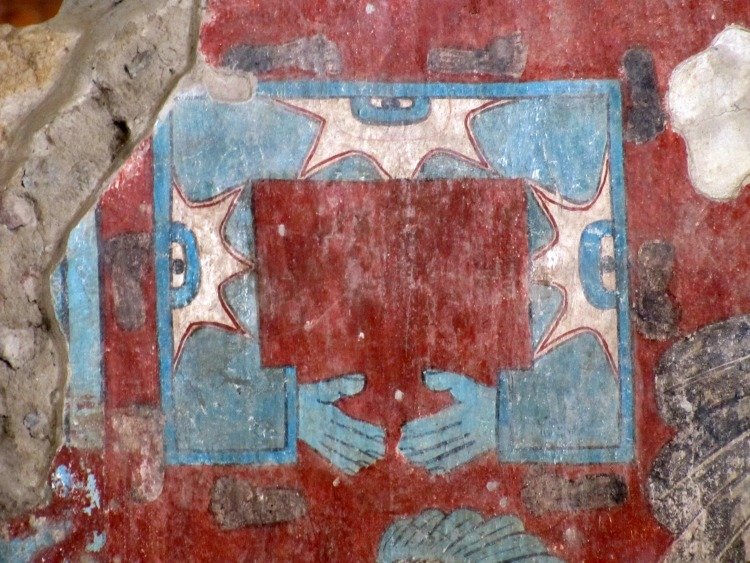


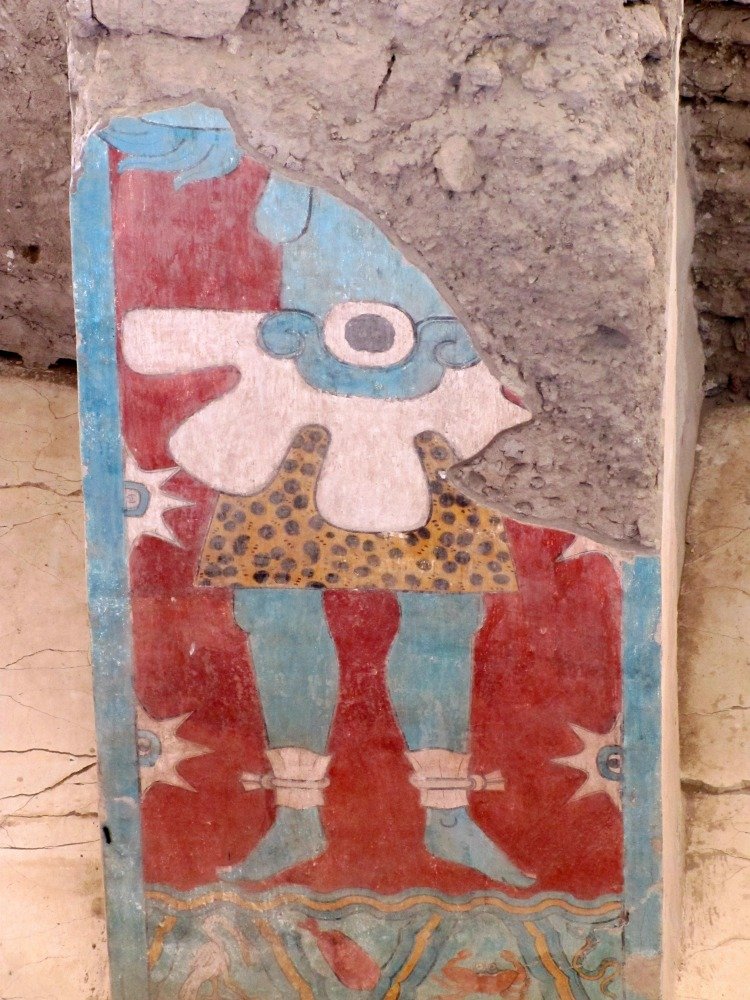
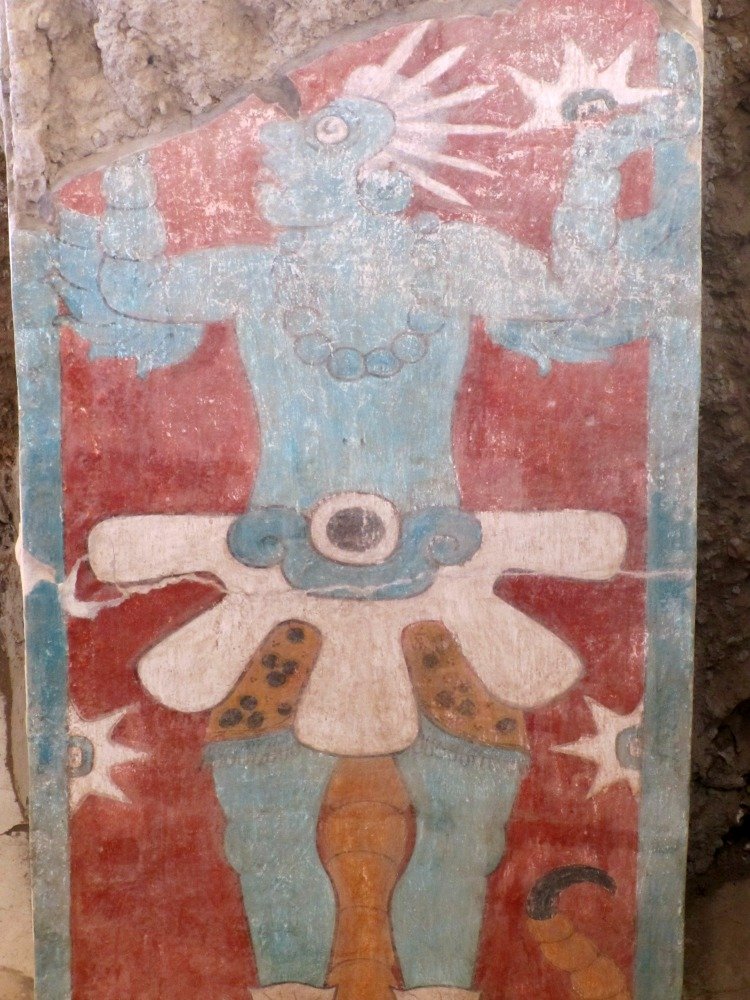
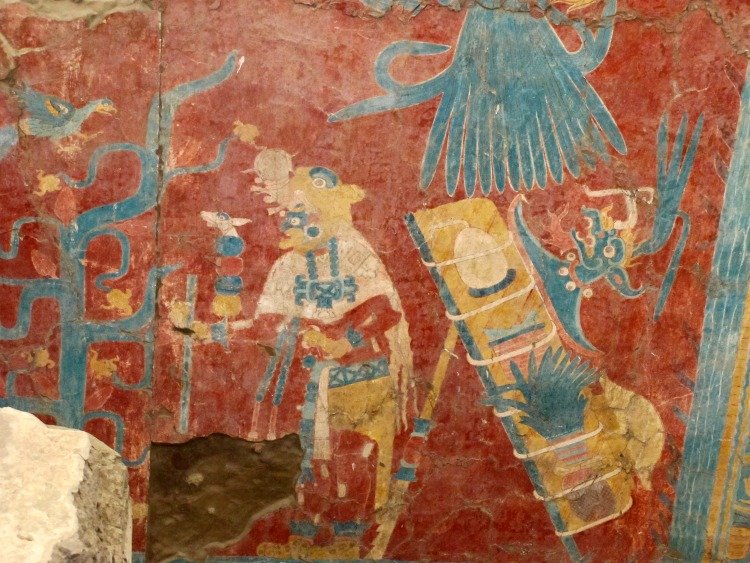

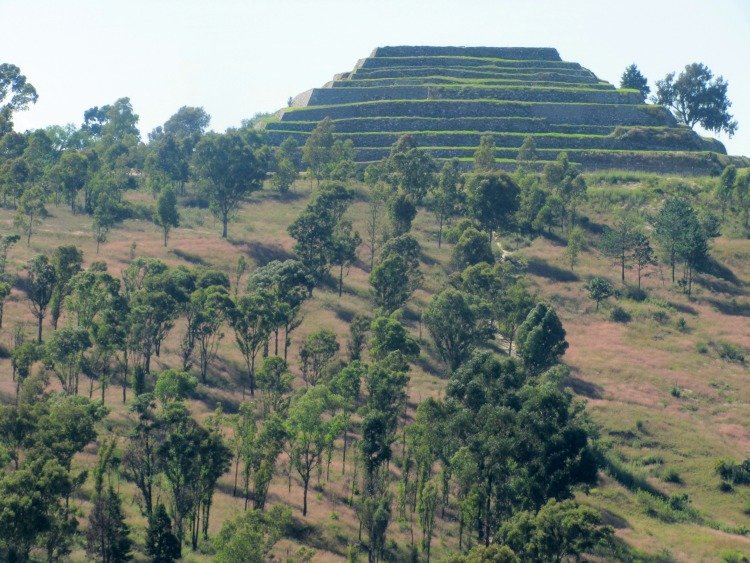



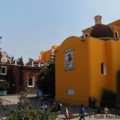
Roberta Loufek says
Wonderful photos! Thank you for sharing your interesting experiences in such an informative post.
Ruth says
Roberta,
Thanks a lot. This site is wonderful and deserves exposition.
Yolchipahuac says
Thank you so much for this, its exactly what i wanted to know about and it was very helpful in deciding my trip to Cacaxtla!
Sheryl Wilson says
My mother was on the team that discovered the battle mural while going to UDLA (University of the Americas), when discovered in 1975, her team was replaced by a team from Yale University, I believe, PBS did a story on this site, it’s called “ Sky Watchers”. I got to see this site in early 1976. My mother lived in Choulula.